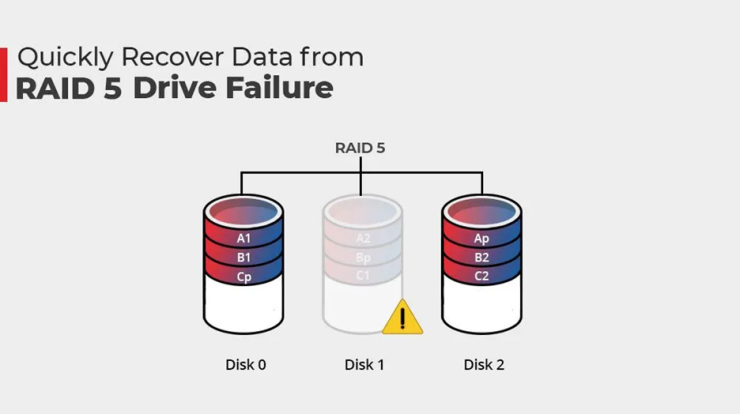
JavaScript framework is the cornerstone of modern web development. As an experienced developer, you must know how it has evolved significantly. In this comprehensive guide, we will explore the evolutionary stages of the JavaScript framework. Furthermore, we will explore the transition from the fifth edition, ECMAScript 5 (ES5), to the transformative sixth edition, ECMAScript 2015 (ES6).
It is important to note that JavaScript is the primary scripting language for web browsers. In this guide, we will show you the key features of ES5 and how ES6 evolved. At the same time, we will look into the language enhancements in ES6. What’s more? We will also look into the new data structures in ES6 JavaScript framework. But that’s not the end. We will show you more amazing features. Let’s continue reading till the end.
What Are the Key Features of ES5?
ES5, or ECMAScript 5, is like the foundation of a building for JavaScript developers. In other words, it laid the groundwork for JavaScript. Moreover, it also introduced the key features that form the backbone of the language. These features are variable declarations using ‘var’ and function expressions. They may seem basic, but they’re the building blocks of many applications.
Developers often encounter ES5 coding patterns in older projects and legacy codebases. While ES6 brought new amazing features. However, it doesn’t decrease the ES5’s importance. It is like a bridge that connects developers to the past. For example, it addresses limitations and showcases how JavaScript evolved.
How Did ES6 Evolved?
ES6 is also known as ECMAScript 2015. It emerged as a JavaScript superhero to address the limitations of its predecessor, ES5. The need for ES6 arose from a desire to make coding more efficient and enjoyable. It introduced many features and improvements. These are:
- Arrow functions
- Template literals
- Let and const declarations.
These enhancements aimed to streamline code. The evolution to ES6 is not just an upgrade; it’s a leap forward. Therefore, it allows developers with tools that enhance both productivity and code quality.
What Are the Language Enhancements in ES6?
ES6 gave us an effective array of language enhancements.
First on the list are block-scoped variables, ‘let’ and ‘const,’. They prevent unintended variable hoisting issues.
Next, there are arrow functions. They help us achieve a concise syntax, saving developers precious keystrokes. As a result, we get more straightforward ways to write functions.
Then, there come template literals. They enable seamless string interpolation. Enhanced object literals offer shorthand notations for defining properties.
Finally, there come destructuring assignments. They help you extract values from arrays or objects with elegance.
With these enchanting features, ES6 transformed JavaScript, making coding a more expressive and enjoyable experience.
What Are the New Data Structures in ES6?
In ES6, new data structures enhance JavaScript with improved functionalities. Maps and Sets are two key additions. Maps allow storing key-value pairs. As a result, they provide a flexible alternative to objects. However, sets store unique values. Therefore, they help in scenarios where uniqueness matters.
Symbols play a crucial role in ES6. They introduce a new primitive data type. Besides, they are unique and can be used as identifiers. As a result, they prevent unintentional conflicts in property names.
Iterators and Generators simplify handling collections in ES6. Iterators help traverse data structures, while Generators allow the creation of iterable sequences.
What Are Promises and Asynchronous Programming?
Promises to revolutionize asynchronous programming in ES6. They work by providing a more organized and readable way to handle tasks. Promises act as placeholders for the results of asynchronous operations. As a result, they allow developers to manage success and failure outcomes more effectively.
Compared with ES5’s callback-based approach, Promises offer cleaner and more maintainable code. With callbacks, nesting can lead to the “callback hell” problem. Therefore, it makes code hard to understand. Promises address this issue by chaining functions. Therefore, it results in a more structured and understandable code.
ES6 introduces the async/await syntax. It simplifies asynchronous code even further. Async/await allows developers to write asynchronous logic synchronously. As a result, the code appears more linear and easier to follow. This advancement enhances the readability and maintainability of asynchronous code in JavaScript.
What Are Classes and Modules in ES6?
Classes in ES6 are a way to create reusable and organized code for object-oriented programming. They provide a blueprint for creating objects with shared properties and methods. Using classes makes code more readable. Moreover, they also help maintain and extend functionality.
Benefits of classes include encapsulation, where data is kept within the class. The second benefit is inheritance. It allows a class to inherit properties and methods from another. This promotes code reusability and easier maintenance.
Modules are like containers for organizing code. They group related functions, variables, and classes. As a result, they make code more modular and easier to manage. Modules help avoid naming conflicts and improve code structure.
What Is the Role of Compatibility and Transpilers in ES6?
Compatibility in web development refers to how well code works across different browsers. Browsers may support different versions of JavaScript. ES6, or ECMAScript 2015, introduced new features to JavaScript. However, not all browsers fully support these features.
Transpilers like Babel bridge this gap. They convert modern JavaScript code, like ES6, into older versions browsers understand. This ensures that the code runs smoothly on various browsers. Babel, a popular transpiler, plays a key role in this process. It takes modern code and transforms it into a compatible format.
What Are the Best Practices and Migration Strategies For Transitioning From ES5 to ES6?
Here are the special tips for developers:
Tips for Transitioning from ES5 to ES6:
Add ES6 features incrementally into your codebase. This makes the transition more manageable.
Familiarize yourself with ES6 features like arrow functions, const and let declarations, template literals, and destructuring.
Transition to ES6 modules for better code organization and maintainability.
Ensure your development tools and environments support ES6 features to maximize efficiency.
Common Pitfalls When Migrating
Be cautious of variable scoping changes, especially when using `let` and `const`.
Check browser support for ES6 features, and consider using a transpiler like Babel for broader compatibility.
Understand differences in behavior, especially regarding the `this` keyword in arrow functions.
Migrating to ES6 modules might require adjustments to how you load and organize code.
Best Practices for Writing Modern JavaScript Code
Adopt a consistent coding style across your team using tools like ESLint.
Prefer `const` for variables that won’t be reassigned and `let` for those that will.
Leverage arrow functions for concise syntax, but be mindful of their `this` behavior.
Embrace destructuring and the spread operator for cleaner code.
Use template literals for more readable string interpolation.
Embrace asynchronous programming with Promises and Async/Await for cleaner asynchronous code.
Organize your code into modular components for better maintainability.
Ignite innovation with Sencha: Elevate your projects using cutting-edge JavaScript frameworks for superior results
Conclusion
The shift from ES5 to ES6 in JavaScript shows a significant evolution in the JavaScript Framework. Staying updated with JavaScript’s evolution is crucial for developers seeking to optimize their coding skills. Embracing ES6 improves code quality and readability. Moreover, it also ensures compatibility with the latest web standards and best practices.
FAQs
How Does ES6 Improve Code Organization?
ES6 enhances code organization through features like modules, const, and let declarations.
Can I Mix ES5 and ES6 in the Same Project?
Yes, you can mix ES5 and ES6 in the same project.
Are ES6 Features Supported in All Browsers?
ES6 features are not universally supported in all browsers. Browser compatibility varies, but transpilers like Babel help bridge these gaps.
Which JS Framework Is Best and Why?
The “best” JavaScript framework depends on project requirements, team expertise, and specific needs. Popular choices include Ext JS, React for UI, Angular for large-scale applications, and Vue for simplicity.








